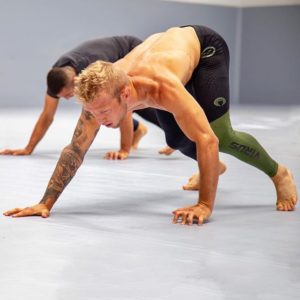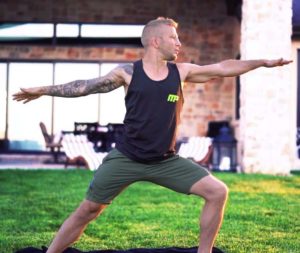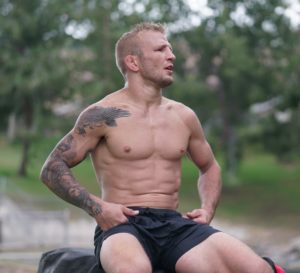When we talk about working out, getting results, and staying healthy, it usually looks something like this: high-intensity interval training, weightlifting, running, and things that work up a sweat and build muscle.
Sound familiar?
Conditioning and resistance training are the big names we love to incorporate into our exercise routine, but what if I told you we’re missing a crucial component of fitness that can make or break our training (and even prevent some serious injuries)?
That all-important element is mobility training.
Mobility training involves mindful movements that improve your range of motion. When you do dynamic stretches prior to a workout, move through exercises that focus on flexibility, and perform purposeful exercises that allow you to achieve better positioning for your other workouts, you are working on your mobility.
Incorporating mobility exercises into your training is key for improving your joint health and movement, giving you a strong foundation to successfully conquer your heaviest lifts and most intense conditioning. These exercises might get your heart racing the same way that a good lift does, but your movement matters!
Luckily, mobility training is one of the easiest things you can incorporate into a home workout routine – you can perform these exercises with zero special equipment and very little space.
Here’s everything you need to know about incorporating mobility exercises into your daily home workout.
Mobility exercises you can do at home

As opposed to static stretching, mobility exercises move your joints through controlled ranges of motion, improving your body’s overall flexibility, balance, and performance.
If you’re using your home mobility exercises as a warmup, base your mobility training on the muscle groups that you are working out that day. If you are doing your mobility training before hitting a big workout, you’ll want to warm up and increase the range of motion of the muscles that you are focusing on.
Improving the mobility of your joints might be just the missing ingredient you need to hit heavier lifts and increase your athletic performance, since it can significantly improve range of motion and flexion.
For instance, if you’re looking to get in some heavy squats in your home gym, practice some hip-opening mobility exercises like:
• Kneeling lunges: Start with one knee on the ground and the other foot forward and flat on the ground. Move your hips forward with control, then return.
• Pigeon stretches: Begin by extending one leg behind you and position the other leg forward so that your heel is on the ground and touching your opposite hip. Move with this stretch to open up tight hip flexors.
You can also improve knee mobility with:
• Knee flexions: Start with one knee on the ground and the other foot flat and close to your body, similar to a squatting position. Slowly work back and forth on the front of your feet, concentrating on the knees.
• Knee circles: Lie on your back with your feet flat on the ground. With your feet remaining on the ground, move your knees in circular motions to improve their mobility.
For upper body and shoulder work, consider adding:
• Wall extensions: Stand with your back against a wall and your arms out and bent at the elbow in a 90 degree angle. Working with control, slide your arms up and down the wall to improve shoulder mobility.
• Doorframe hangs: Stand in a doorframe and hold onto each side of the frame. Keeping your arms stationary, push yourself forward and back to extend your shoulders and increase flexibility.
Other ideas for improving your mobility at home

There are other things you can do to improve mobility that don’t necessarily involve specific moves, like:
• Start practicing yoga. If you have no idea where to start with your mobility training at home, consider finding an online yoga course to follow along with. Yoga is all about mindful, functional movement, so practicing yoga will improve your mind-body connection and incorporate movements that improve flexibility and strengthen the accessory muscles you don’t always think about when lifting weights or conditioning.
• Foam rolling. Foam rollers aren’t just good for rolling out sore muscles – they can also be used as a tool for improving movement. If you have access to a foam roller at home, check out these mobility exercises that use the roller as an accessory for movement-based warmups to improve joint strength.
Tips for increasing your mobility at home

The great thing about mobility exercises is that they’re extremely versatile and can be done from almost anywhere. Below are some tips to help you optimize you mobility setup at home.
• Give yourself some space. Mobility exercises are some of the easiest types of movements that you can do from home since they don’t require any special equipment. Select a space in your home gym or living room where you can stretch out and have a full range of motion.
• Grab a Yoga Mat. This will make your grounded mobility exercises more comfortable to perform and prevent slipping.
• Incorporate mobility training often. Practicing regular mobility training in addition to your other workouts lets your joints keep up with your muscles as they’re getting stronger. Even if you’re having an “off day” and don’t do any other forms of training, you can still practice some low-impact mobility training to keep your accessory muscles primed for higher-intensity days. Stretch out while you’re watching TV or at the end of a long day when getting ready for bed.
• Move during a work break. If you’re working from home, you’re likely spending a lot of time hunched at a computer – not great for anyone’s mobility! Dedicate a ten-minute interval every couple of hours to move through some simple mobility exercises, especially for your neck and back. Your body will thank you.
• Include a mix of both mobility exercises and static stretches into your home workout regimen. You’re probably already aware you should be stretching. Performing static stretches before and after a heavy workout increases flexibility and loosens tight muscles to prevent soreness. However, studies have shown that regularly incorporating dynamic mobility stretching is more effective in aiding muscle performance and reducing the risk of injury than static stretching alone. [*].
Mobility training may not be as flashy as the other components in your fitness routine, but improving it is key to being able to properly perform any impressive movement in the first place.
Have you experienced strength or performance gains (or other benefits) from incorporating mobility training? I’d love to know!